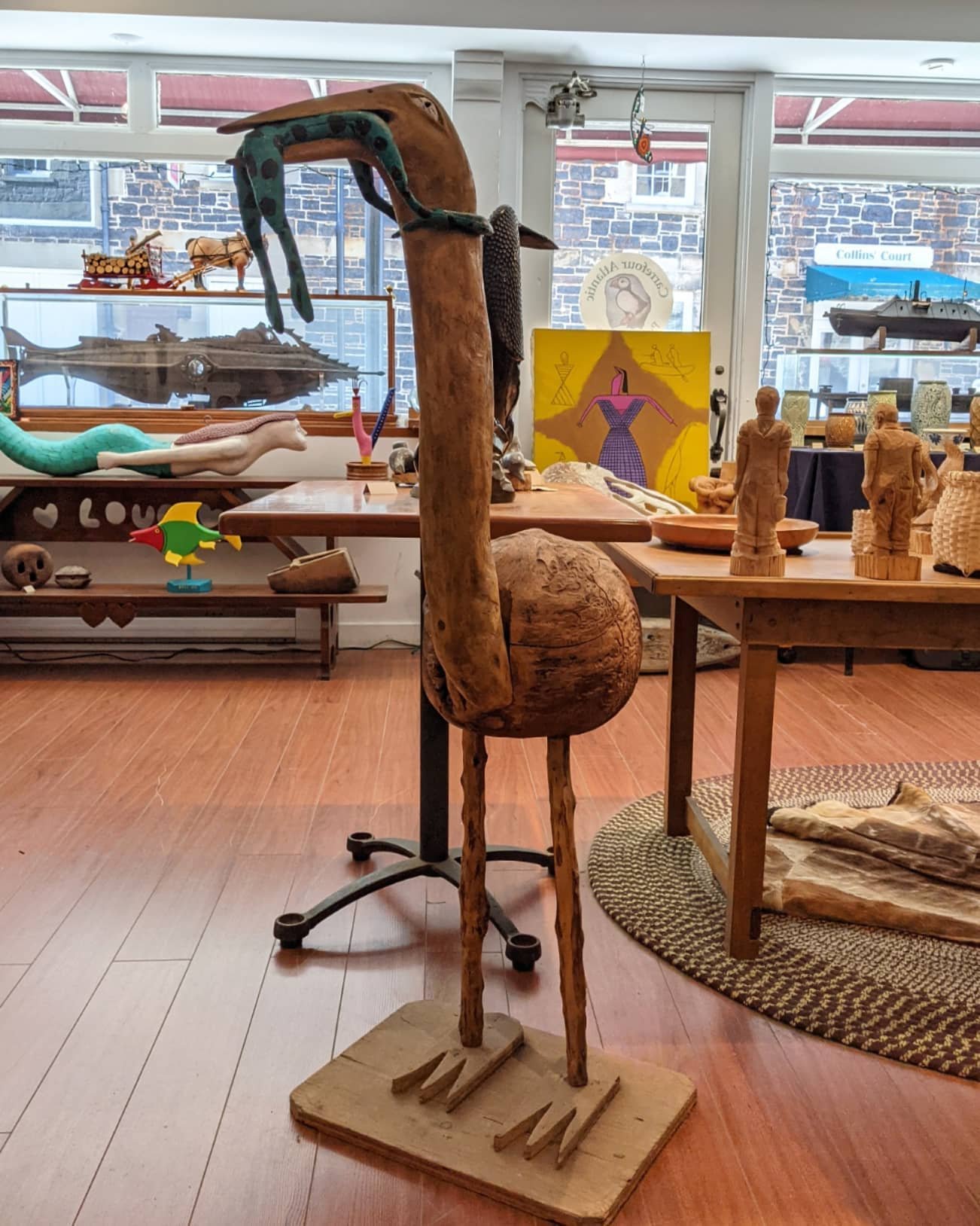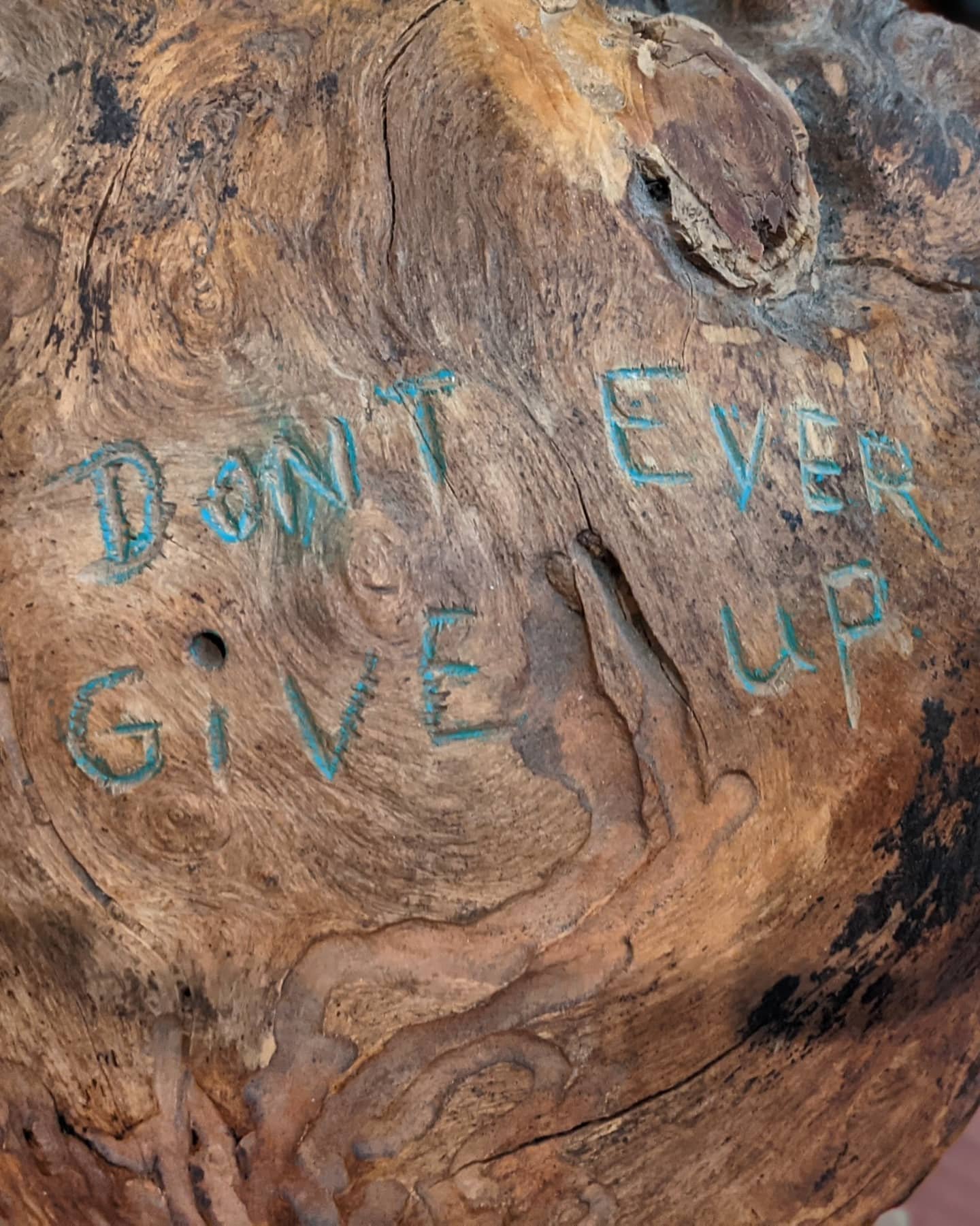Over the years, Michel, the owner of Carrefour Atlantic Emporium, has collected many stories about the artwork in our collection, as well as about life in Atlantic Canada in general. Below are just a few…….
The Story of the creation of “Don’t Ever Give Up” by David Brooks
"When I came here in 1994, David Brooks was studying at NSCAD then… he wanted to get himself a degree in art. I had a shop in Historic Properties, which I opened then. And he came to me one day (or, he came to the shop, as he was at NSCAD which was just next door) with a knife. I remember it well, a very nice knife with a handle made out of moose antler and an eagle head in it. At any rate, I bought that from him. And from then on, he came almost every week for years with things that he had made.
One day that he came in, I had bought some burls in an auction sale. There was a box of them, and I asked him, I said, "Dave, we've got some burls here, you think you could do something with that?" so he said, "Well, yes, I'll try that,".
So he picked that one up, he went home and he came back, oh, two, three days later with this carving here and the poster which was the inspiration for it. So what you have is a piece of driftwood; you have the burl itself; two legs, the two little trees that became legs; and a base... and he made a leather frog that he fitted in the whole thing.
He had a poster, that was an American poster, that says 'don't give up'. And what it was, it was the neck and the head of a stork, with a frog in its mouth. The frog is choking the stork so that the stork cannot gobble the the frog up. Normally it would eat it up just in one gulp, so the the gist of the thing is that if you can manage to choke your adversary, maybe you'll stay alive.
And that's how you ended up with this one."



The Story of the Tea Dolls of Labrador
"The Tea Dolls were made by the Innu, or Montagnais as they were once called, who were aboriginal hunters who were living in the southern part of the Labrador Peninsula. The Northern part was the Naskapi, the people of the of the deer, of the caribous. But at the bottom end you had the Montagnais, who were also in Quebec and going up to the middle of Labrador, and those people were hunters.
At the end of the winter, they would come out of the woods to North West River, where the Hudson Bay had a post, and they were spending the summer up there. During the summer, the women would make dolls, and they would stuff them up with tea leaves.... so they were called Tea Dolls.
So in the Fall, when they were all going back to the the trapping grounds in the upper reaches above Churchill Falls, the dolls were given to the children, so the children were carrying part of the needed goods for the winter.
And in the winter, if they ran out of tea, they would unravel and open up the doll, get some tea out of them and replace it with moss and and lichens and things like that you find in the upper reaches.
So this is where the tea dolls come from. It was part of the way of life of the aboriginal people who were coming to the post every year and making those little dolls and bringing them back up, with the children with their own role of carrying goods with those dolls.
The maker of these specific Tea Dolls was a very well-known lady, who lived in Sheshatshui. Her name was Angela Andrew. There's quite a few different people who made those things, but she was regarded as one of the most important doll makers of that type."





